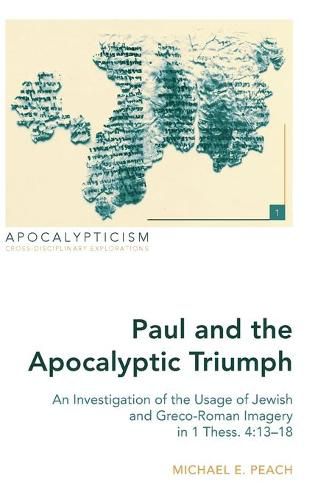Readings Newsletter
Become a Readings Member to make your shopping experience even easier.
Sign in or sign up for free!
You’re not far away from qualifying for FREE standard shipping within Australia
You’ve qualified for FREE standard shipping within Australia
The cart is loading…






This title is printed to order. This book may have been self-published. If so, we cannot guarantee the quality of the content. In the main most books will have gone through the editing process however some may not. We therefore suggest that you be aware of this before ordering this book. If in doubt check either the author or publisher’s details as we are unable to accept any returns unless they are faulty. Please contact us if you have any questions.
1 Thessalonians 4:13-18 has long been the quintessential Pauline text on the parousia of Christ. Nowhere else does Paul reveal a more vivid picture of Christ’s coming. The apostle Paul employs a number of images to describe the parousia to the Thessalonian congregation who have become anxious, grief-stricken, and despairing in the midst of the loss of their loved ones. Until recently scholars have held that Paul’s use of imagery in 1 Thess. 4:13-18 was either inspired by Greco-Roman imperial categories or Jewish apocalyptic categories.
Michael E. Peach provides a fresh examination of imagery in 1 Thess. 4:13-18 arguing that Paul synthesizes both the Jewish and Greco-Roman imagery. With careful analysis, Peach traces the history of interpretation of Pauline eschatology finding patterns of thought concerning the source of inspiration of Paul’s use of imagery. Utilizing these patterns, the author further examines the meaning and function of four images employed by Paul: a loud command,
the sound of an archangel,
the trumpet of God, and the meeting of the Lord. Ultimately, Peach’s discoveries demonstrate that Paul synthesizes apocalyptic and Greco-Roman triumph imagery to create a dramatic mosaic of the apocalyptic triumph, the parousia of Jesus Christ.
$9.00 standard shipping within Australia
FREE standard shipping within Australia for orders over $100.00
Express & International shipping calculated at checkout
This title is printed to order. This book may have been self-published. If so, we cannot guarantee the quality of the content. In the main most books will have gone through the editing process however some may not. We therefore suggest that you be aware of this before ordering this book. If in doubt check either the author or publisher’s details as we are unable to accept any returns unless they are faulty. Please contact us if you have any questions.
1 Thessalonians 4:13-18 has long been the quintessential Pauline text on the parousia of Christ. Nowhere else does Paul reveal a more vivid picture of Christ’s coming. The apostle Paul employs a number of images to describe the parousia to the Thessalonian congregation who have become anxious, grief-stricken, and despairing in the midst of the loss of their loved ones. Until recently scholars have held that Paul’s use of imagery in 1 Thess. 4:13-18 was either inspired by Greco-Roman imperial categories or Jewish apocalyptic categories.
Michael E. Peach provides a fresh examination of imagery in 1 Thess. 4:13-18 arguing that Paul synthesizes both the Jewish and Greco-Roman imagery. With careful analysis, Peach traces the history of interpretation of Pauline eschatology finding patterns of thought concerning the source of inspiration of Paul’s use of imagery. Utilizing these patterns, the author further examines the meaning and function of four images employed by Paul: a loud command,
the sound of an archangel,
the trumpet of God, and the meeting of the Lord. Ultimately, Peach’s discoveries demonstrate that Paul synthesizes apocalyptic and Greco-Roman triumph imagery to create a dramatic mosaic of the apocalyptic triumph, the parousia of Jesus Christ.